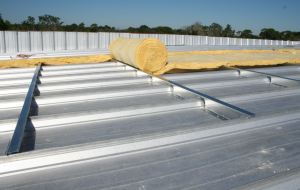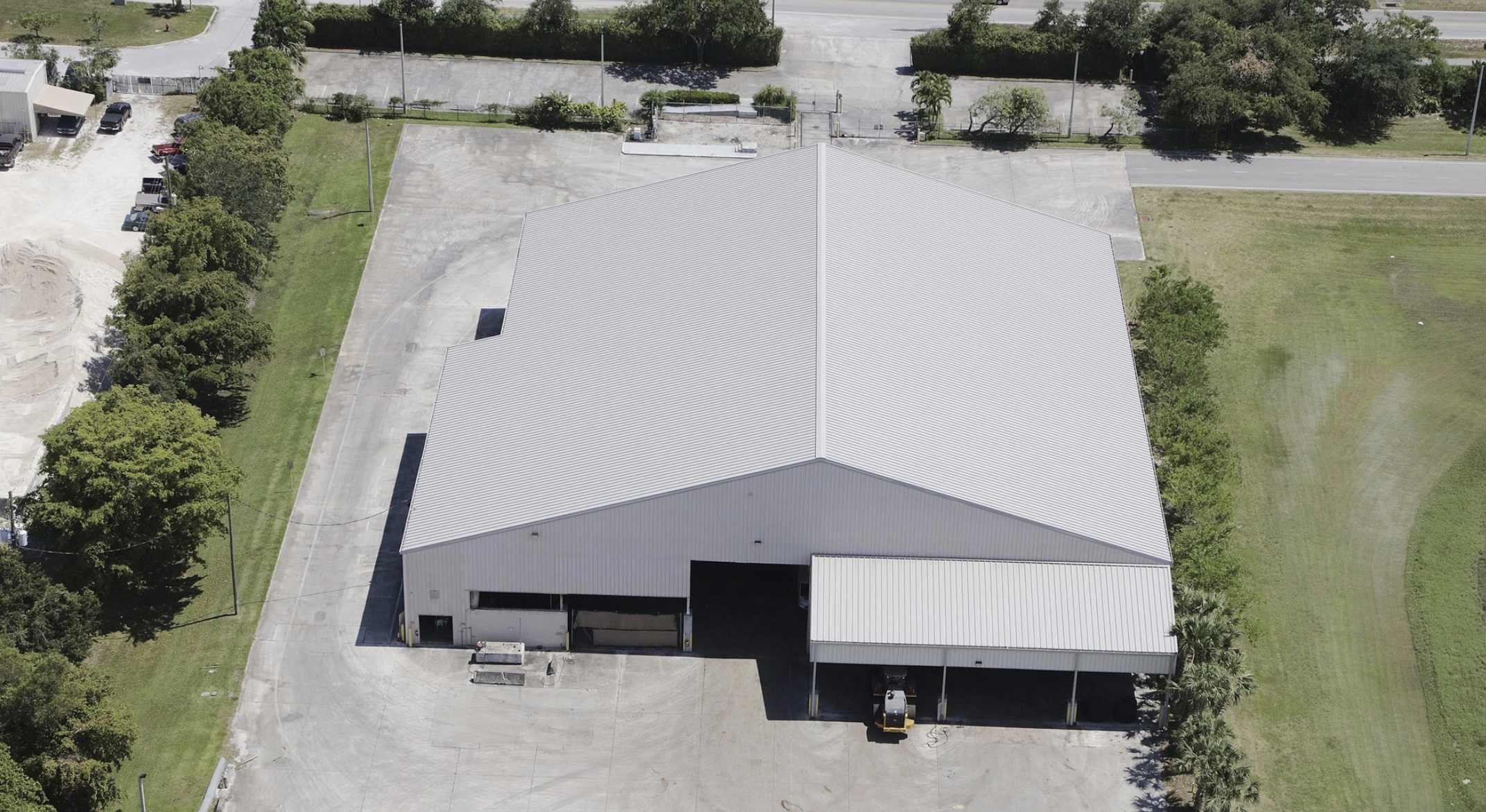SO HOW CAN YOU UPGRADE TO STANDING-SEAM ROOFING?
1. Removing the old roof still can be done but a structural engineer must be hired to design the bracing needed to properly support the existing purlins for the new standing-seam roof. Properly positioned angle bracing, band strapping or support channels will likely be required. I have heard several horror stories of buildings that shook and rattled in the slightest breeze where an old screw-down roof was removed and a standing seam was installed without re-bracing the purlins.
2. Leave the existing roof in place and retrofit the new standing-seam roof on top of the existing roof. This is the easiest and least expensive option and can be accomplished with any one of the following systems:
a. Notched Sub-Purlin Systems: These low-profile framing systems are cut out to fit over the ribs of the existing panels. The systems can be designed to strengthen the existing purlins and handle the weight of the new roof system. They can also be ordered in custom heights to provide additional insulation between the old and new roofs and be modified to add additional panel support to meet the newer building codes.
b. Tall-clip Standing-seam Systems: Some panel providers and metal building companies have special tall-clip systems that allow you to install a new standing-seam panel over certain existing screwdown roofs.
c. Hat Grid or Hybrid Zee and Hat Framing: Assemblies of hat channels and/or Zees create a grid of structural members to which you can attach the new roof.
d. Clip and Angle Systems: These create a line of tall angle clips with another structural angle or Zee attached to the angle clips.
The retrofit process is not difficult but the building codes have likely changed since your building was constructed and we must now deal with current code standards. Most major metal building companies can provide retrofit systems that have been designed by a structural engineer. So don’t go it alone or do something “the way we always do it”. Get an engineered plan for your roof. It adds very little cost and the peace of mind is priceless. A new standing-seam roof should last 40 years or more. Therefore, it is worth ensuring a proper design. Plus, as a bonus, many insurance companies will reduce your rates for compliance with the current codes.
PHOTOS: ROOF HUGGER INC.





Be the first to comment on "From Screw-down to Standing-seam Metal Roofing"